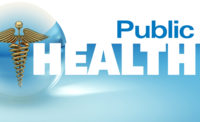The Granite State is tops and the Land of Enchantment isn’t so enchanting when it comes to kids’ wellbeing, according to a new study which looked at data across all U.S. states to determine which are the healthiest for children.
Care.com, an online service that connects families with caregivers, ranked states according to a combination of factors including health and safety - including the stability of a person’s living environment and the accessibility and affordability of medical and non-medical care; education; child care and poverty rates.
New England strong
As shown in the list below, New England had three of its states sweep the first- through third-place rankings for "Overall Health" -- and had five states make it into the Top 10.
New Hampshire clinched the title of "Healthiest State for Children" because it earned solid scores across all three categories. N.H. state ranked #1 for both the "Education and Child Care" and "Socieconomics" categories, and #3 for "Health and Safety."
In second place was Vermont, due in large part to its #1 rank in the "Health and Safety" category. Although V.T. made it into the top 5 for "Education and Child Care" -- coming in at #4 -- the state's overall score was pulled down by the fact that it came in at #11 for the "Socioeconomics" category.
In third place was Massachusetts. Similar to Vermont's story, M.A. secured the #2 rank for both the "Health and Safety" and "Education and Child Care" categories. However, this state's overall score was pulled down by its #13 position within the "Socioeconomics" category.
Rounding out the rest of the top 10 "Healthiest States for Children" list was Minnesota at #4, Connecticut at #5, Iowa at #6, Nebraska at #7, New Jersey at #8, Maine at #9, and North Dakota at #10.
The complete list:
- New Hampshire
- Vermont
- Massachusetts
- Minnesota
- Connecticut
- Iowa
- Nebraska
- New Jersey
- Maine
- North Dakota
- Hawaii
- Wyoming
- Utah
- Colorado
- Virginia
- Wisconsin
- Kansas
- South Dakota
- Pennsylvania
- Maryland
- Washington
- Indiana
- Rhode Island
- Montana
- Idaho
- Missouri
- Delaware
- Illinois
- Michigan
- Oregon
- Ohio
- Texas
- North Carolina
- Florida
- New York
- Kentucky
- South Carolina
- California
- Arkansas
- Alaska
- Tennessee
- Oklahoma
- Georgia
- Alabama
- Arizona
- West Virginia
- Nevada
- Louisiana
- Mississippi
- New Mexico
Methodology details:
"Health and Safety" includes Air Quality, Percentage of Children at Healthy Weight, Hospital Quality, Number of Pediatricians per 10,000 Children, Infant Mortality Rate, Percentage of Children without Health Insurance, and Violent Crime Rate. Data are from USA.com, ChildHealthData.org, data.medicare.gov, AmericanBoardOfPediatrics.org, KaiserFamilyFoundation.org, and FBI.gov.
"Education and Child Care" includes Average Percentage of Students at or Above Proficiency in Math and Reading, High School Graduation Rates, Child Care Availability, Child Care Quality and Child Care Cost. Data are from Care.com, Department of Education, NationsReportCard.org.
"Socioeconomics" includes Unemployment Rate, Housing Affordability, Participation in SNAP (formerly known as Food Stamps), and Percentage of Children Living Below the Poverty Line. Data are from the Bureau of Labor Statistics, the Census Bureau, the Food and Nutrition Service, Zillow.com, and the Center for Disease Control.
Metrics in these categories were normalized on a scale from 0 to 100, and combined using a weighted average with the following weights: Health and Safety (40%), Education and Child Care (30%), Socioeconomics (30%).




